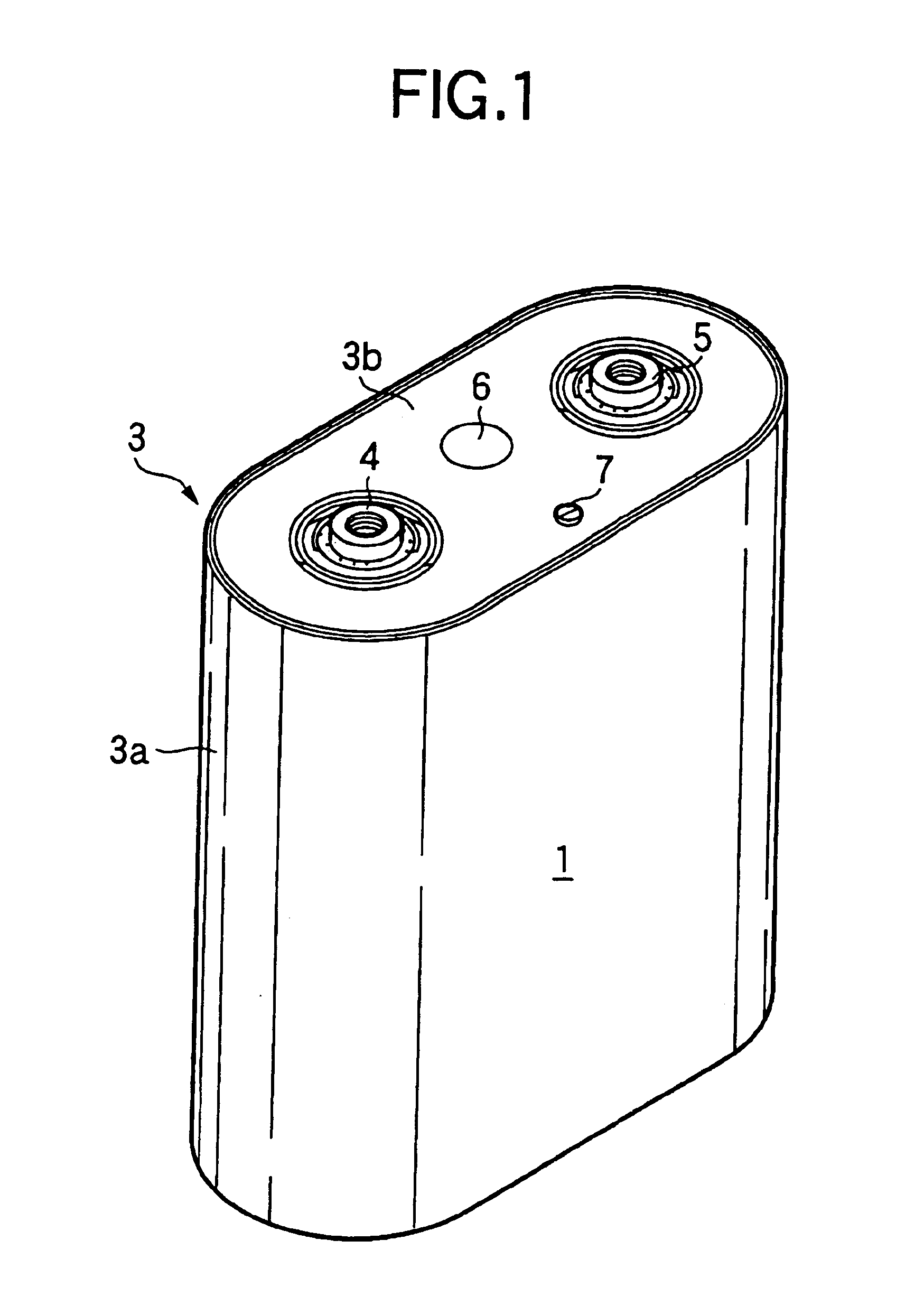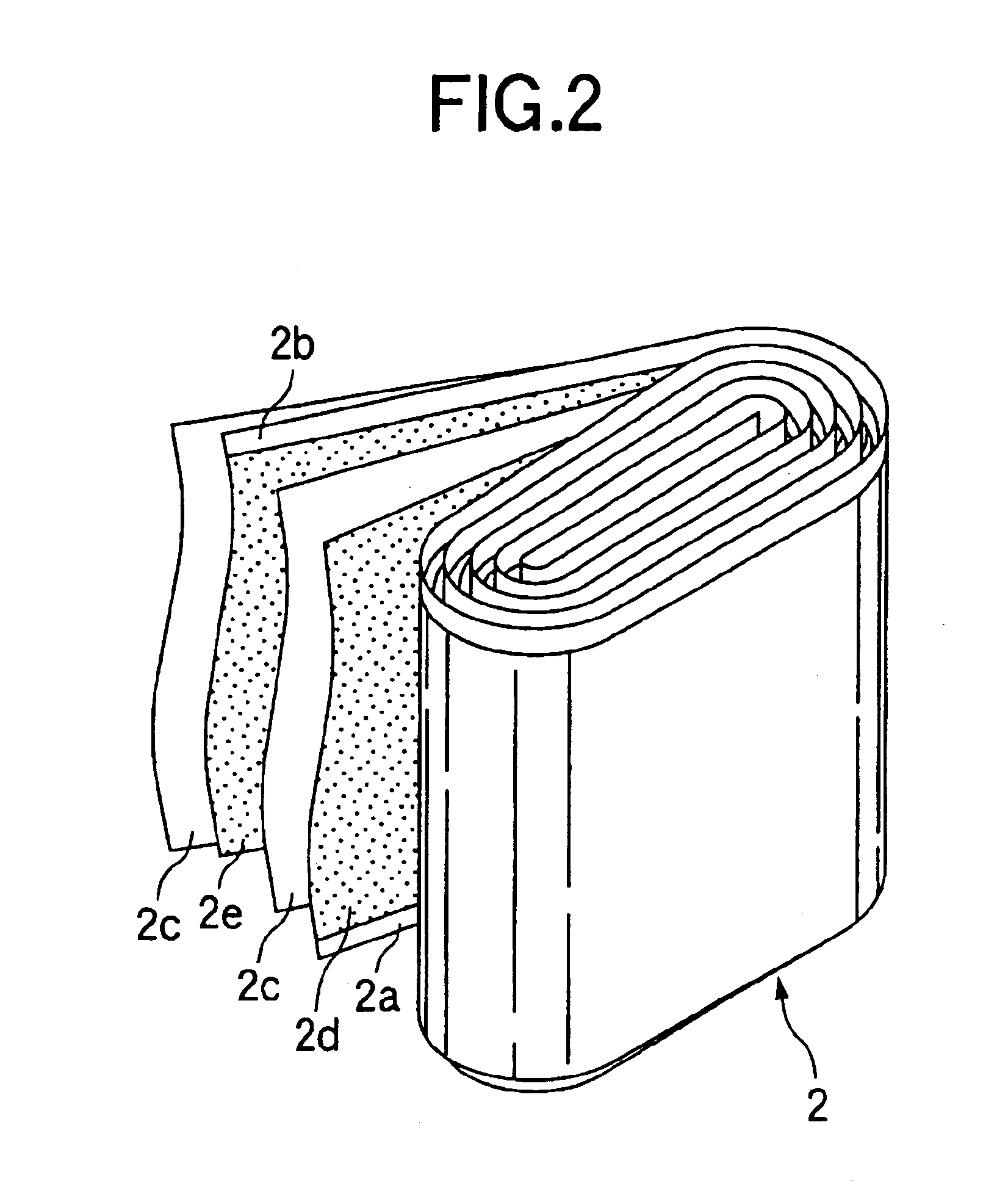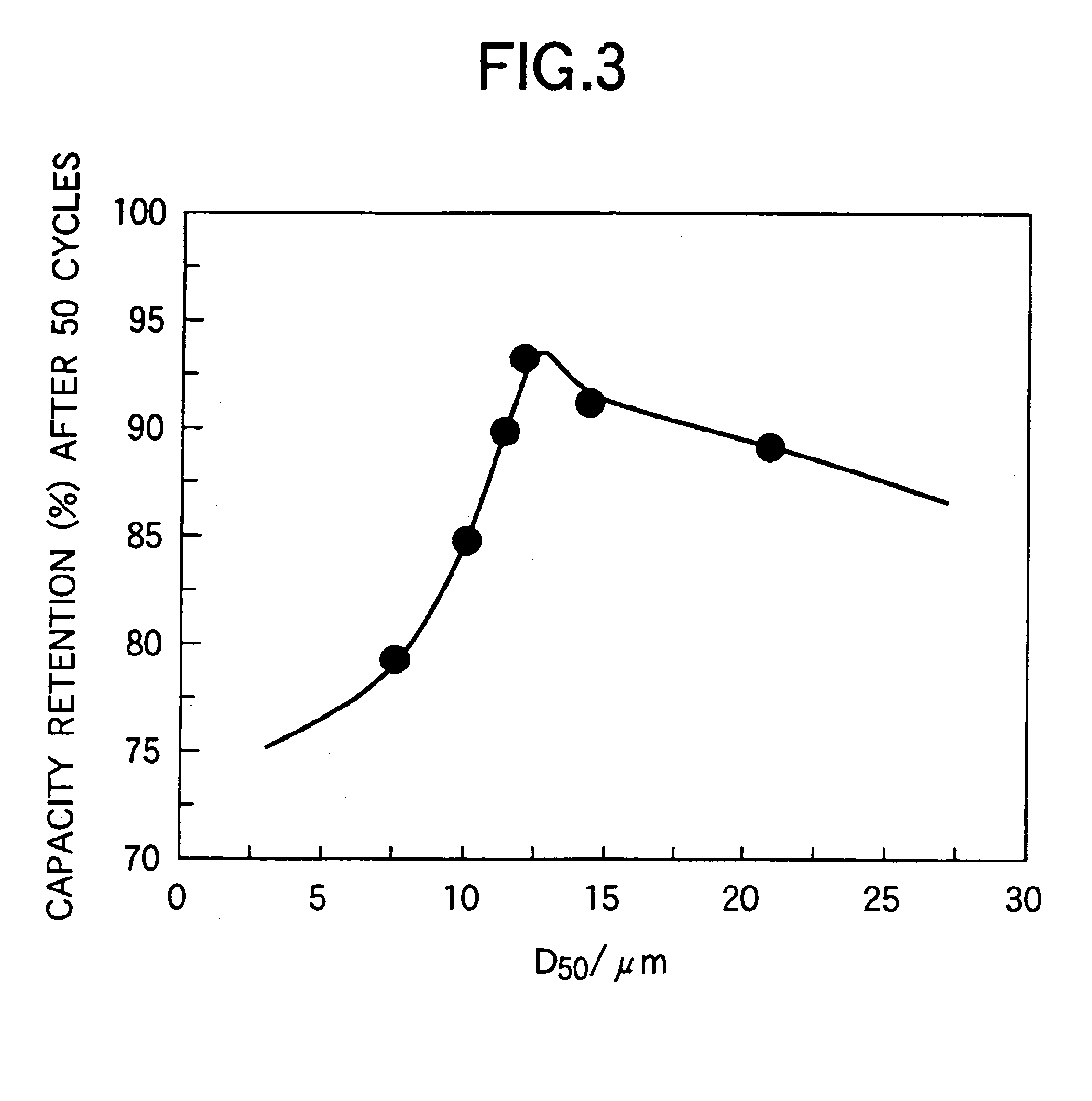Positive active material for non-aqueous electrolyte secondary battery and non-aqueous electrolyte secondary battery comprising same
- Summary
- Abstract
- Description
- Claims
- Application Information
AI Technical Summary
Benefits of technology
Problems solved by technology
Method used
Image
Examples
Embodiment Construction
[0032]One embodiment of the present invention will be described in connection with the attached drawings.
[0033]The positive active material for the non-aqueous electrolyte secondary battery of the present invention can be obtained by, for example, the method described in the following Examples.
[0034]As the positive active material for the non-aqueous electrolyte secondary battery of the present invention, there is used a lithium-nickel composite oxide having a hexagonal structure, which is represented by the compositional formula LiaNi1−b−cCobMncO2 or LiaNi1−b−c−dCobMncMdO2 (in which M is at least one metal element selected from the group consisting of Al, Ti, W, Nb and Mo), wherein the compositional ratio of elements and the physical properties of the positive active material are specified. The resulting non-aqueous electrolyte secondary battery exhibits almost the same capacity density as that of lithium-cobalt composite oxide, i.e., not smaller than 150 mAh / g, an excellent cycle ...
PUM
 Login to View More
Login to View More Abstract
Description
Claims
Application Information
 Login to View More
Login to View More - R&D
- Intellectual Property
- Life Sciences
- Materials
- Tech Scout
- Unparalleled Data Quality
- Higher Quality Content
- 60% Fewer Hallucinations
Browse by: Latest US Patents, China's latest patents, Technical Efficacy Thesaurus, Application Domain, Technology Topic, Popular Technical Reports.
© 2025 PatSnap. All rights reserved.Legal|Privacy policy|Modern Slavery Act Transparency Statement|Sitemap|About US| Contact US: help@patsnap.com



